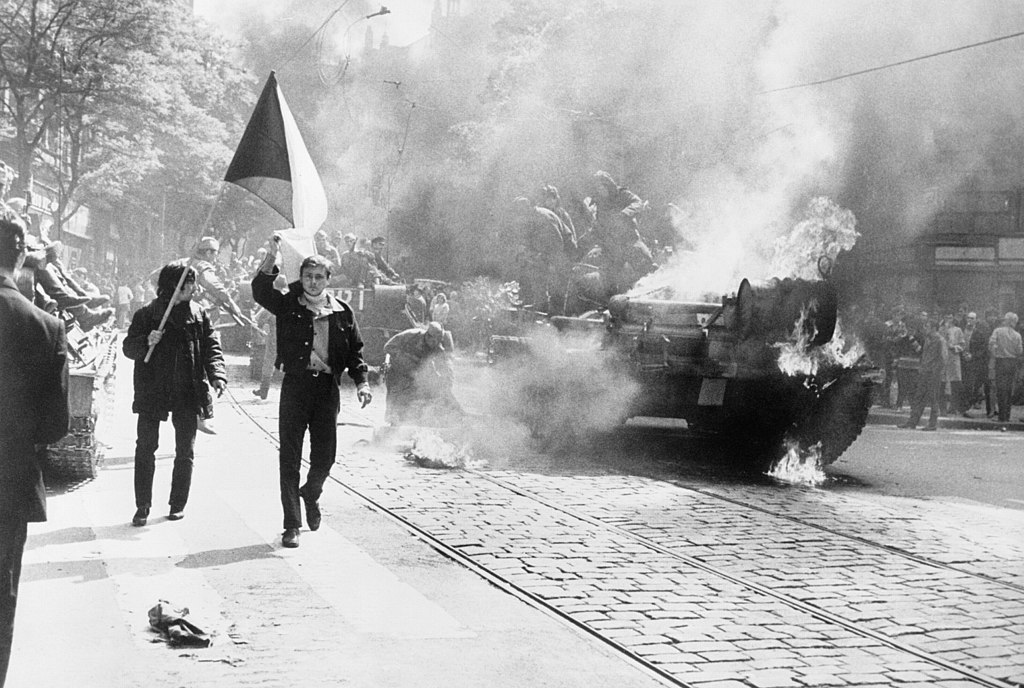Nějak nám vypadl začátek záři
21.8. 1968 Occupation by Warsaw Pact troops
Categories: War crimes , Calendar

The occupation of Czechoslovakia by Warsaw Pact troops was the biggest shock to our country since the end of the Second World War. The invasion claimed the lives of 72 of our citizens.
It was a tragedy, but paradoxically it contributed to deepening the unstoppable erosive process that led to the final collapse of the communist regime in the countries of Central and Eastern Europe and later in the Soviet Union.
Specifically, this involved the military intervention of five states, namely the USSR, Bulgaria, Hungary, the GDR and Poland. This happened on the night of 20-21 August 1968. This action marked the end of the so-called Prague Spring. The Minister of Defence, Army General Martin Dzúr, issues an order that neither the army nor the security forces should resist the occupying forces.
Czechoslovakia is occupied by a force of 750,000 soldiers, 800 aircraft and 6,300 tanks. "By the beginning of September, the invasion had claimed 72 Czechoslovak lives," point out Alena Breuerová and Jarmila Frejtichová in their book My Year 1968.
The massive electronic jamming of Czechoslovak radar signals from the air and on the ground began as early as eleven o'clock at night on 20 August. Its sounds were also reflected on the radar screens of Western intelligence services. Immediately afterwards, before midnight, the armies of the five Warsaw Pact countries crossed the Czechoslovak border.
The strongest military grouping consisting of divisions of the Northern Group of Soviet troops in Poland 2. Polish Army, the 38th Soviet Army of the Carpathian Military District, the 11th Soviet Army of the Carpathian Military District. Guards Tank Army of the Baltic Military District advanced on Jablonec nad Nisou, Náchod, Hradec Králové, Olomouc, Ostrava and Žilina. In the GDR, about nine divisions were prepared for the invasion and were to advance on Prague, Pilsen and along the southwestern borders of the Czechoslovakia.
Units of the Soviet Southern Group, reinforced by a reinforced 8th Hungarian Motorized Artillery Division with the 36th Soviet Air Army and a Hungarian air unit, began the advance on Bratislava and Breclav. From the Uzhhorod area, part of the 38th Army, supplemented by the Bulgarian 12th Motorized Artillery Regiment, was moving in the direction of Košice-Banská Bystrica. "At midnight on 20-21 August, Austria closed its borders with Czechoslovakia," says the book My Year 1968.
By the beginning of November 1968, the armies of the GDR, GDR, MLR and BLR had left Czechoslovakia. The Soviet army remained after the occupation until 1991, with an estimated 150,000 people.
Sources:
Collective of Authors, August 1968: Forty Years After
Alena Breuerová and Jarmila Frejtichová, My Year 1968
www.wikipedia.org
The article is included in categories:







 Nabrala jsem trochu zpoždění
Nabrala jsem trochu zpoždění